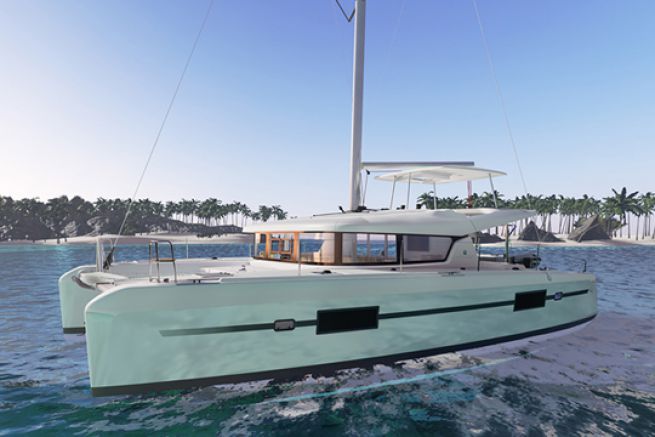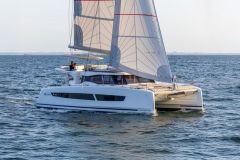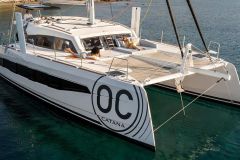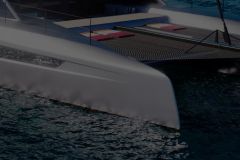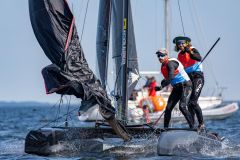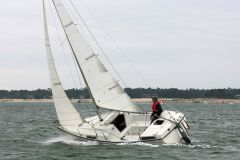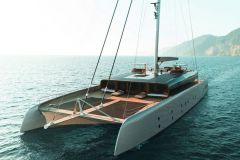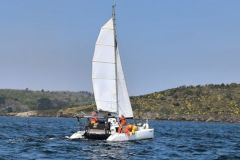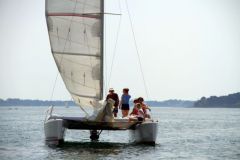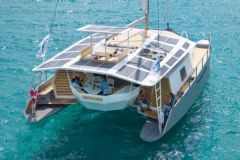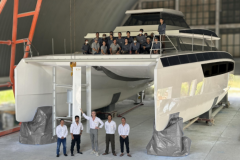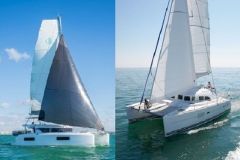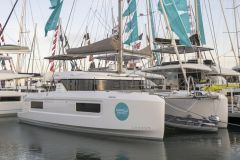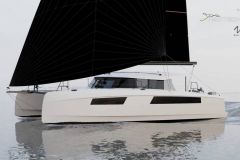At Lagoon, two ranges of catamarans coexist. The one that could be called "traditional", the historical range with in order of size from the smallest to the largest: 380, 400, 450, 560 and 620. And the new range appeared in 2013, with the 39 and 52. For next season will be added on the 42nd which will replace the 421.
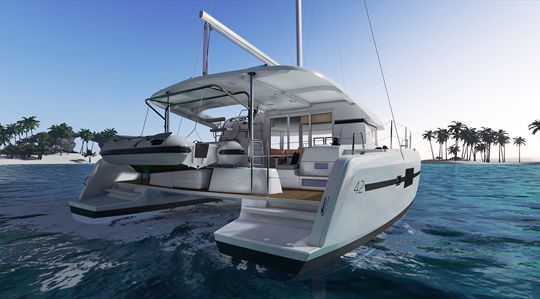
These new catamarans are based on a truly innovative architecture designed by VPLP. Inspired by racing multihulls, and already validated on models 39 and 52, this architectural firm proposed to the Lagoon shipyard a catamaran plan with a very remote mast. Instead of resting on the central beam, the mast is pushed almost to the rear of the deckhouse bulkhead. This position required a particular structure of the nacelle to support compression. Thus the underside of the nacelle - a seagull wing already available on all the other models of the brand - houses a kind of lattice to transfer the forces on the two beams (front and rear). Inside, the recoil of the mast is distinguished by a sponge in the centre of the square. The first advantage: exceptional visibility from the cockpit or saloon to the front! No mast foot to block the forward view.
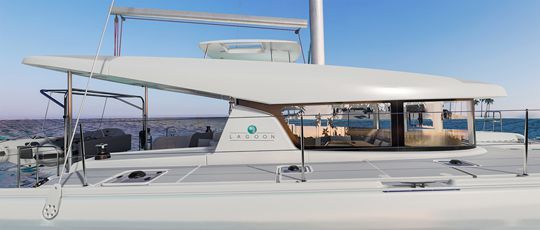
The advantages of the remote rigging
The position of the mast affects the balance of the catamaran. By moving the mast backwards, the weights are moved back. This position allows VPLP to refine the bow volumes (less lift) to improve wave penetration. Moving the sail centre back also makes the sailboat more ardent (more pleasant at the helm). In addition, moving the mast backwards allows the installation of a self-steering jib, while maintaining an acceptable surface area. The adoption of the self-steering system simplifies the tacking process as much as possible since no more sheets need to be touched, the helmsman just has to turn his helm.
The recoil position of the mast opens the angle with the forestay, thus reducing compression on the mast base. This results in a reduced mast profile allowing weight savings, which results in less pitch. The narrower width of the GV also reduced the batten lengths (further weight gain in the tops).
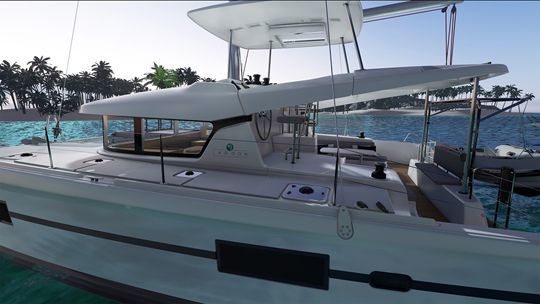
Large-scale developments
The particularity of the 42 will be to receive fittings that are usually found on the larger models. Thus for the deck layout, it will be equipped with large skirts for easy access to water. The tender will also have a tilting davit, as light as it is practical.
On this model, the steering station remains accessible from the cockpit and is not installed on the Fly as it is on the Lagoon 450 .
And in terms of interior fittings, it is possible to have separate showers even in the 4-cabin version. The beds are also of the "Island Bed" type with access on the side, even for the forward cabins (access only on one side). Four double cabins and four bathrooms in only 42 feet. Congratulations!
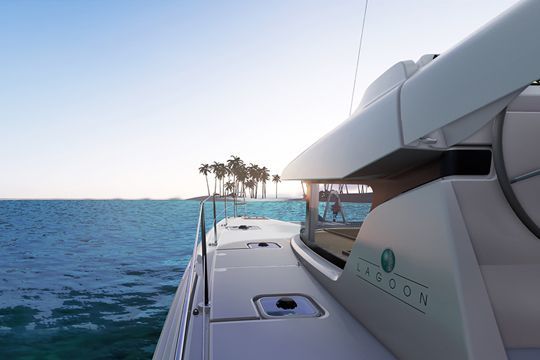
This new catamaran will be presented to the public for the first time in Düsseldorf 2016 before being discovered for France at the Multihull Show in La Grande Motte. But here he is already just left the Bordeaux factory on his way to Germany.
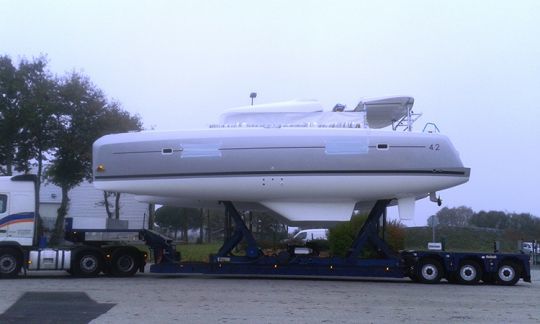
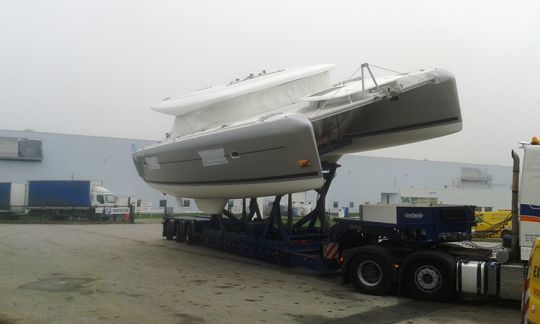

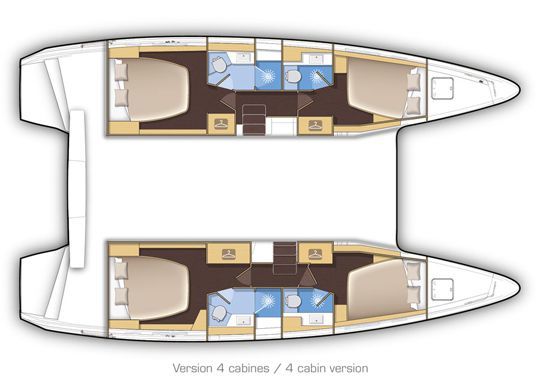
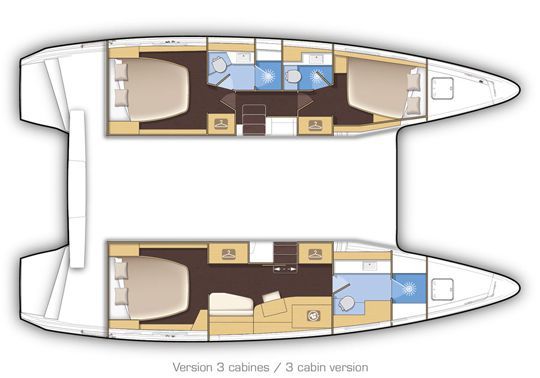
Lagoon 42
Architects : VPLP (Van Peteghem-Lauriot Prévost)
Exterior style: Patrick Le Quement / VPLP
Interior design: Nauta Design
Overall length: 12.80 m
Flotation length: 12.50 m
Width: 7.70 m
Draught: 1.25 m
Air draft: 20.65 m
Light displacement: 12 t
Engines: 2 x 45 hp
Fuel capacity: 300 l
Upwind sail area: 98 m
Mainsail battened: 55 m²
Mainsail with horn: 61.4 m²
Self-steering furling genoa: 36.8m²
Code 0 : 78 m²
Fresh water capacity: 300 l
Number of beds: 6 to 12
EC approval: A/12; B/14; C/20; D/30

 /
/ 